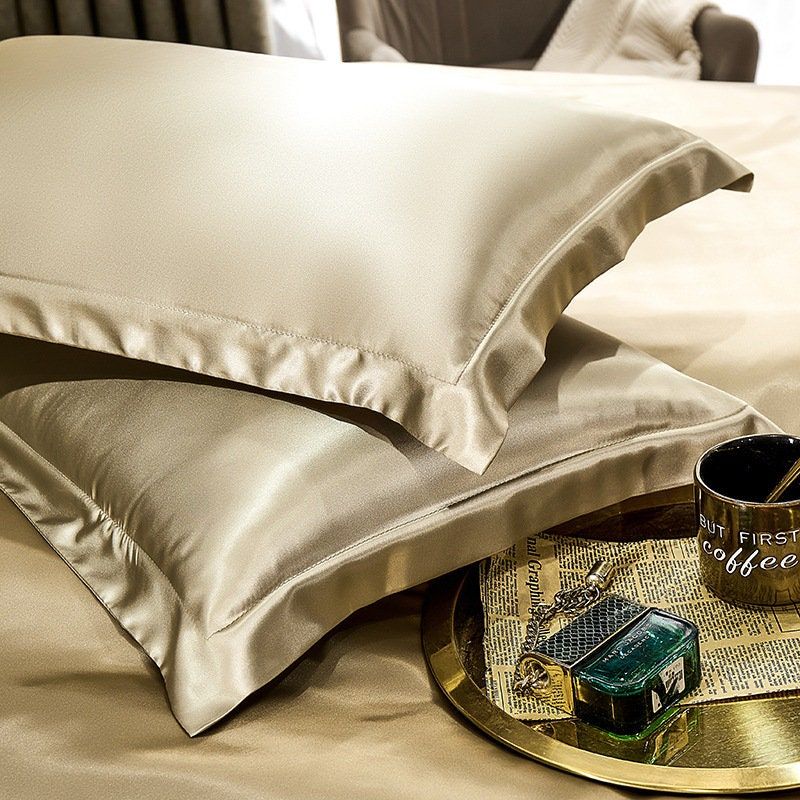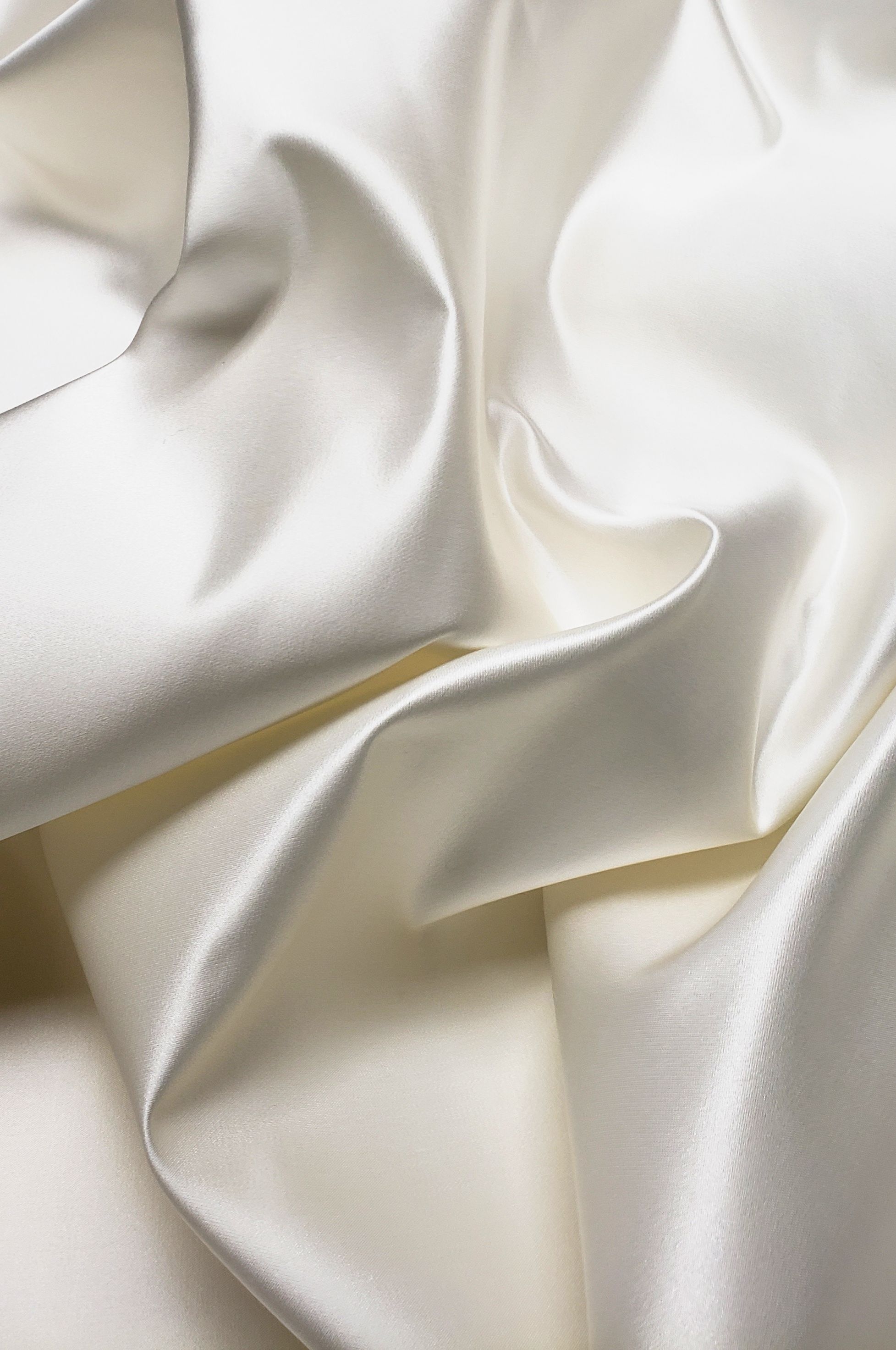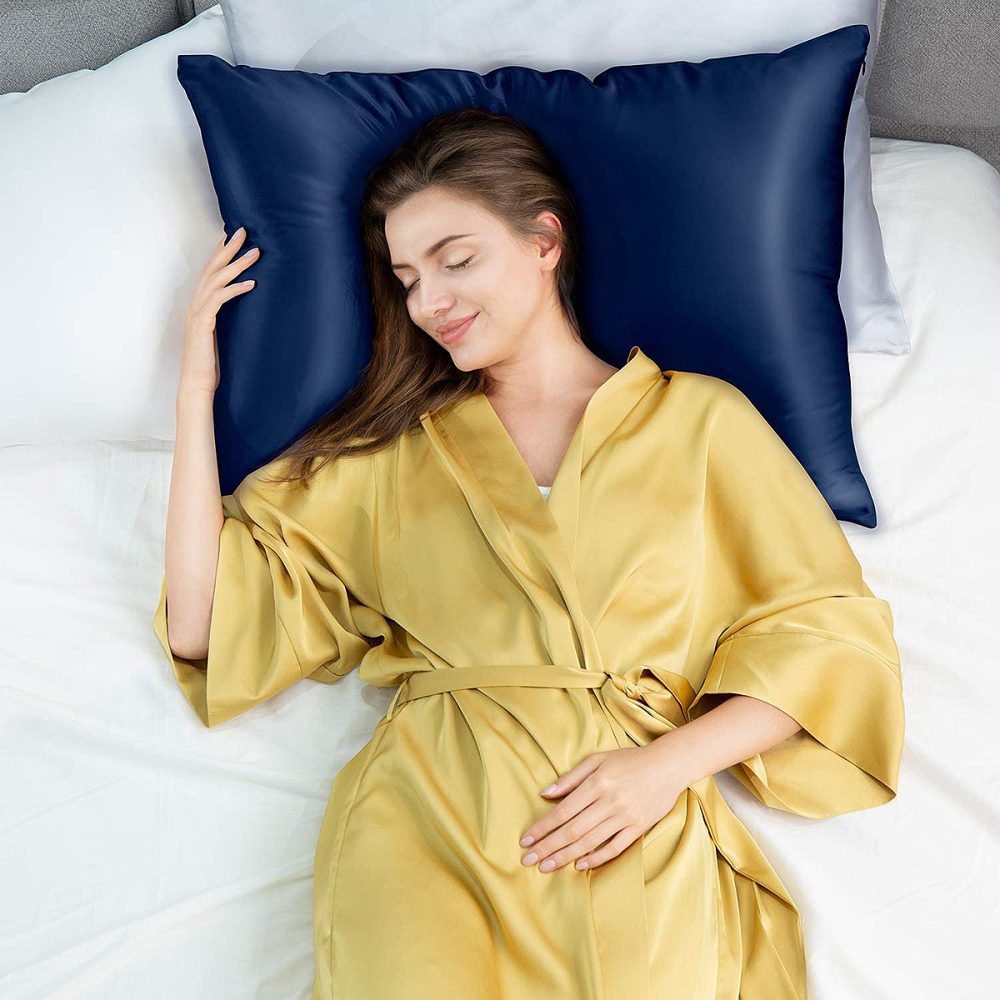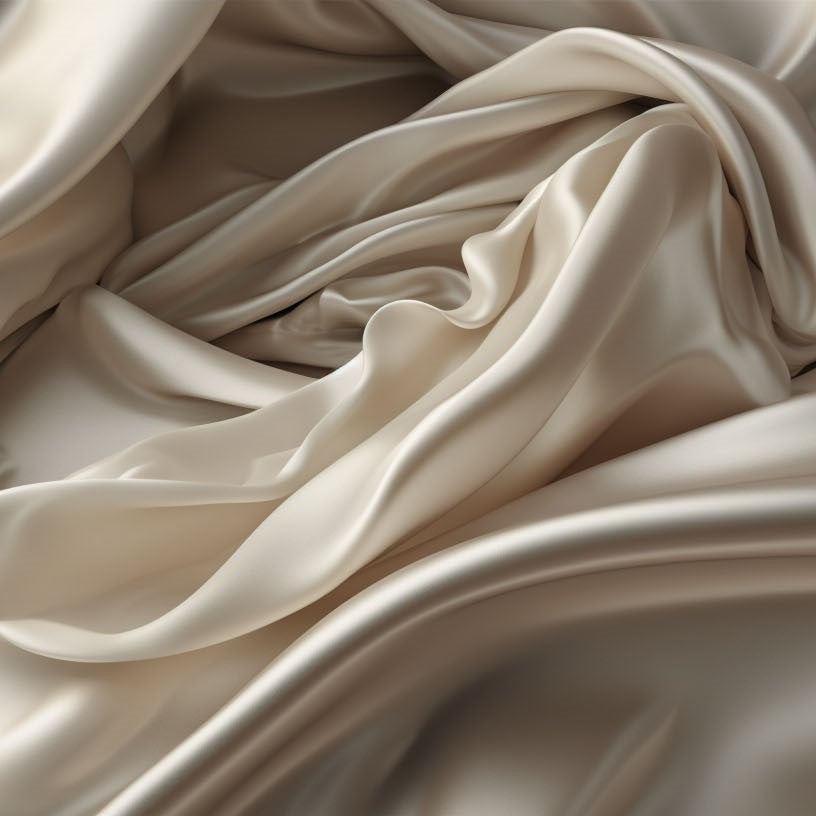How to Make a Silk Pillowcase for a Luxurious Night
Silk pillowcases are a great investment in your bedding collection to improve the quality of sleep. However, silk pillowcases can be expensive, so why not make your own? How to make a silk pillowcase? In this blog, you will learn, step by step, how to DIY a silk pillowcase that is not only a pleasure to have but also uniquely yours!

The benefits of silk pillowcases
Less hair damages:
Compared to regular materials like cotton and synthetic fabric, the texture of silk fabric creates less friction between your hair and the pillowcase and thus reduces hair breakage, frizz, and split ends. This way your hair can maintain its natural shine and look healthier.
Gentle on skin:
In addition, silk fabrics glide smoothly over the skin without causing tensions, which prevents the formation of wrinkles and fine lines. Moreover, silk is an excellent choice if you have sensitive skin because it’s a naturally hypoallergenic material that doesn’t attract dust or allergens like synthetic fabrics usually do. Try silk bedding products if you suffer from allergic reactions and irritations.
Absorbs moist:
Silk does a good job keeping you cool in the summer and warm in the winter. Its breathable properties allow it to absorb excess sweat and moisture from your skin and hair, which keeps you comfortable and prevent overheating.

What you need:
1.A piece of Silk fabric
2.Sewing machine
3.Needles and threadScissors
Directions:
First, measure parameters of your pillow to determine how much fabric you'll need. You'll need a piece of silk fabric that's a few inches more than twice the width of your pillow because you’ll need to leave some room for the seam. Carefully cut the silk fabric based on the size you have pre-measured with fabric scissors. Try to cut as straight as possible so that you’ll have clean edges.
Second, fold the silk fabric in half in a way that the side that should be on the outside of the pillowcase is now facing inward. Sew the two long edges of the fabric together with a seam that’s about 0.5 inches long. Now you are basically left with a tube-shaped structure. Don't forget to topstitch the ends of the seam to secure it.
Next, turn the pillowcase inside out through the opening. Be careful not to tear it up. Now you can fold the open edges of the pillowcase inward about half an inch. This step keeps the edges neat and prevent fraying.
Finally, lay down and start your customized beauty sleep.

Conclusion
Making your own silk pillowcases is an easy and affordable way to enjoy the benefits of luxury pillowcases. If you haven’t tried one before, don’t hesitate any longer. DIY silk pillowcase today, you skin, hair, and body will thank you later!
FAQs:
1. What is the best fabric to make a silk pillowcase?
Both types of natural silk – mulberry silk and wild silk – are good for making a cosmetic pillowcase. The structure of the fabric also plays an important role. Fabric for a silk pillowcase should be smooth, without a prominent surface texture or slubs. A tight weave and sturdy hand can also be a plus.
2. Is it better to sleep on a silk or cotton pillowcase?
“There is some evidence that when compared to typical cotton pillowcases, less moisture is absorbed with a silk pillowcase,” says Janiene Luke, MD, an associate professor of dermatology at Loma Linda University in California. These benefits are more pronounced for hair, especially curly and textured hair.
3. Is it worth sleeping on a silk pillowcase?
The benefits of sleeping on a silk pillowcase are most pronounced for hair, experts say, because the smooth surface reduces friction and thus breakage.
Related Reads

The Ultimate Solution for Acne-Prone Skin: Silk Pillowcases

Dream in Silk: The Ultimate Guide to VAZASILK's Silk Hair Sleep Bonnet

Discover the Age-Defying Benefits of VAZASILK Silk Pillowcases

